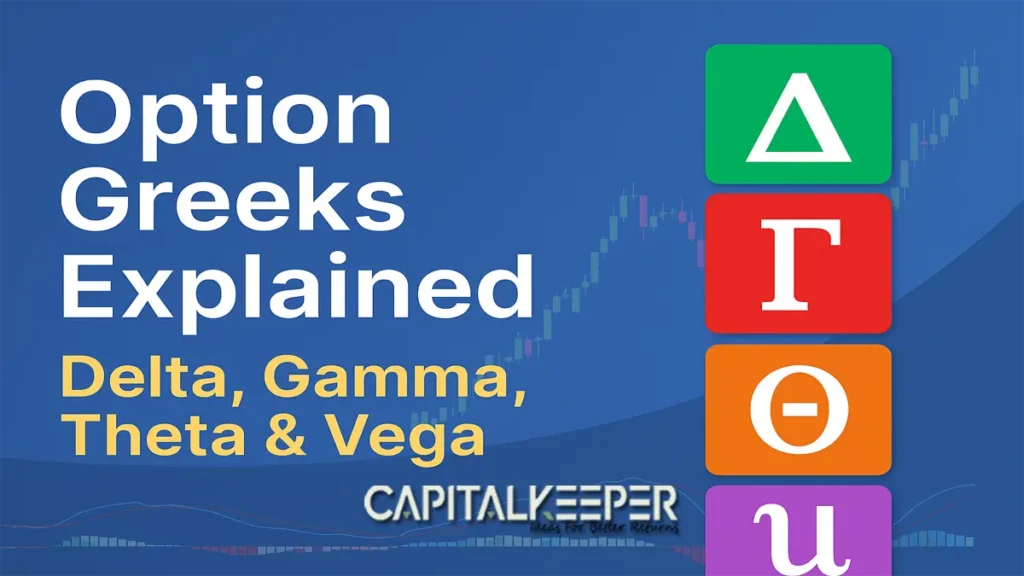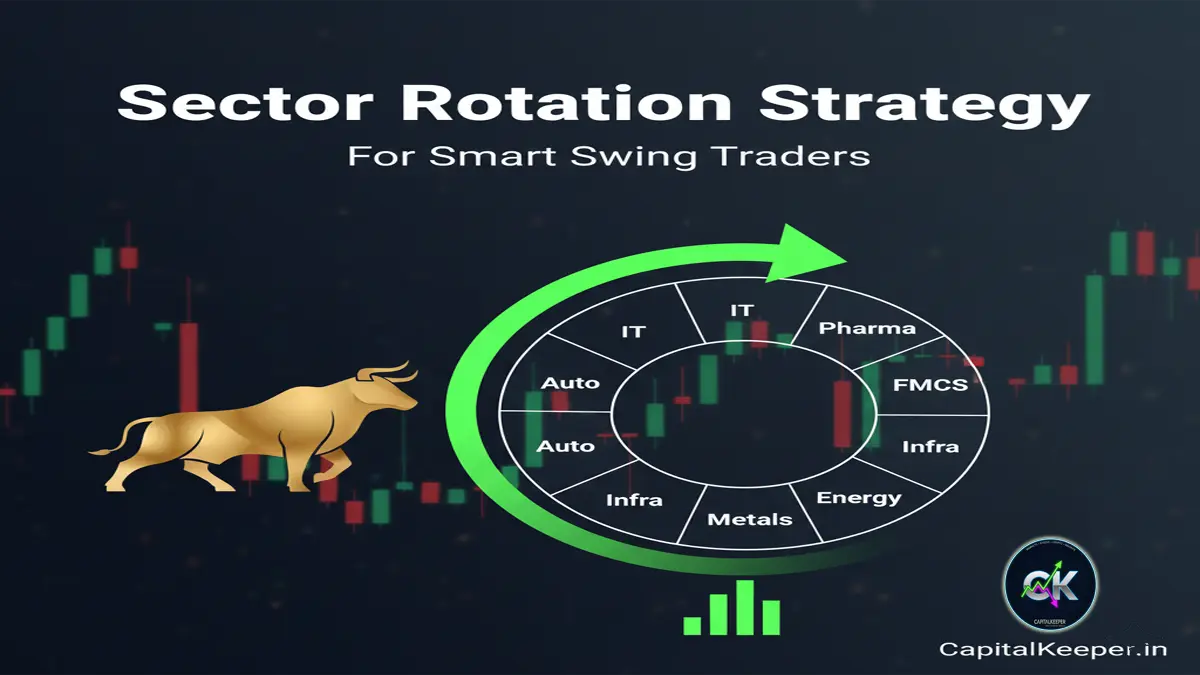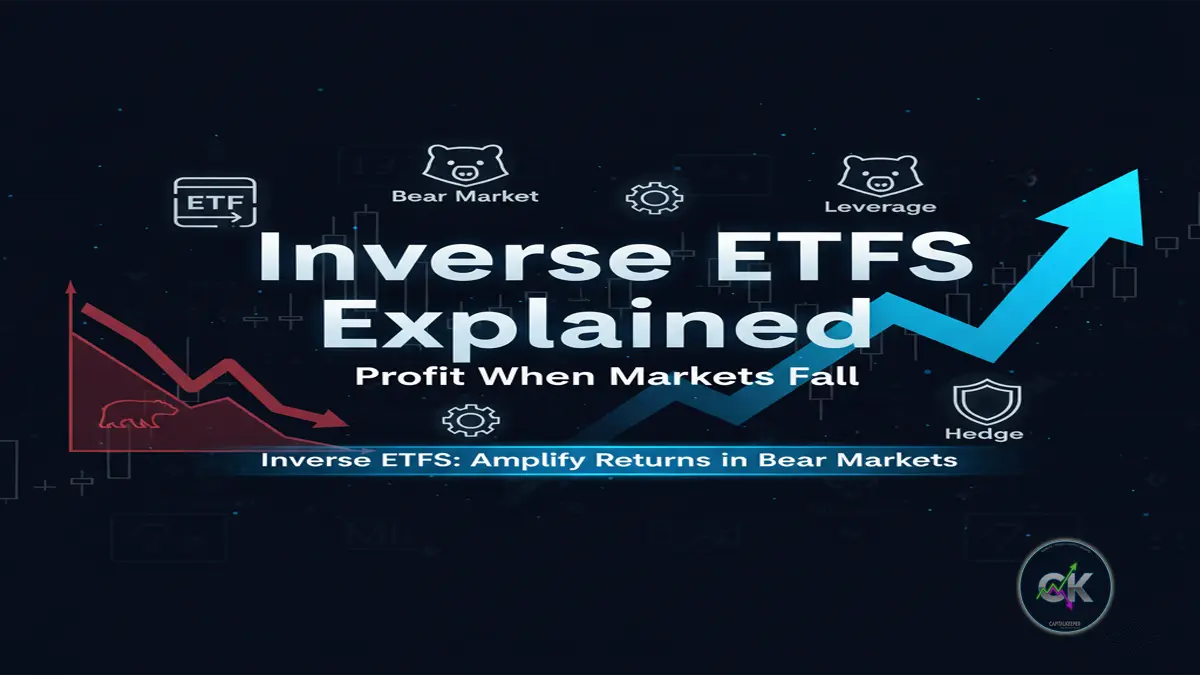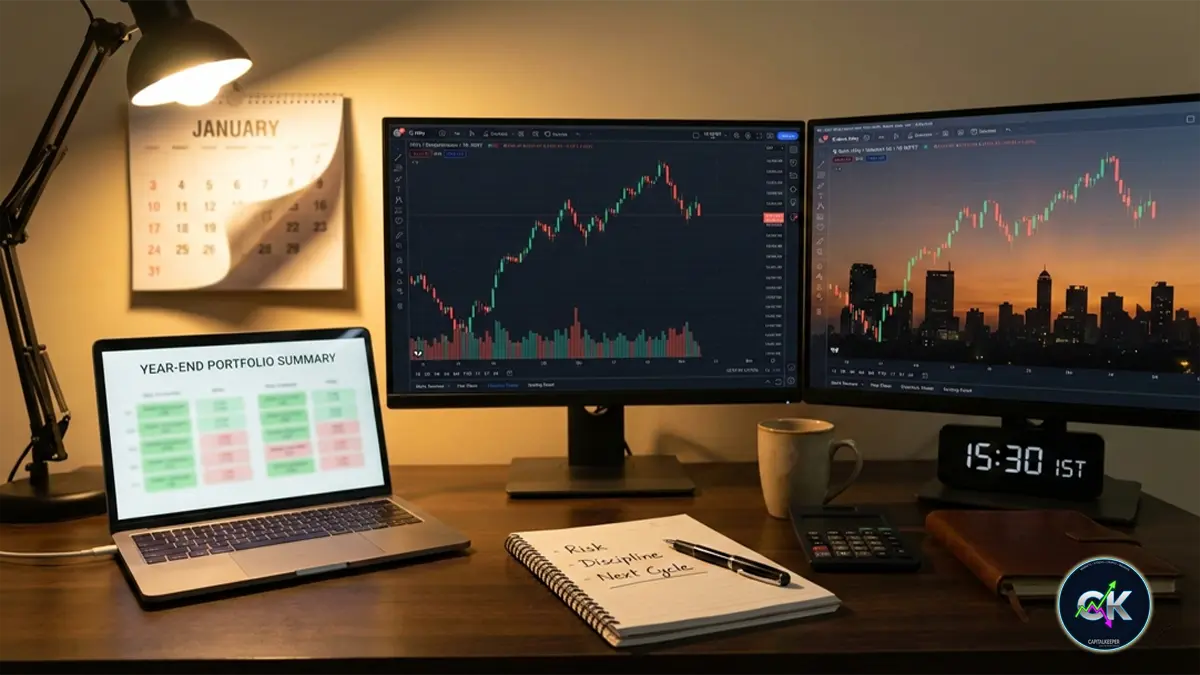Option Greeks Explained: Delta, Gamma, Theta & Vega for Smart Trading – CapitalKeeper
By CapitalKeeper | Pre Market Opening | Indian Equities | Episode 6 Day-3
Learn the four key option Greeks – Delta, Gamma, Theta, and Vega – and how they impact option pricing, time decay, and volatility. Mastering these metrics will help you manage risk and plan effective trading strategies in the Indian derivatives market.
Option Greeks: A Complete Guide & How to Use Them in Trading
Options trading involves complex pricing dynamics influenced by multiple factors. Option Greeks are mathematical measures that help traders understand how an option’s price reacts to changes in market conditions. Mastering these Greeks can significantly enhance trading strategies, risk management, and profitability.
What Are Option Greeks?
Option Greeks are metrics that quantify the sensitivity of an option’s price to various factors like:
- Underlying asset price
- Time decay
- Volatility
- Interest rates
The five major Greeks are:
| Greek | Measures | Impact on Options |
|---|---|---|
| Delta (Δ) | Price sensitivity to underlying asset movement | Calls: +0 to +1, Puts: -1 to 0 |
| Gamma (Γ) | Rate of change of Delta | High Gamma = Faster Delta shifts |
| Theta (Θ) | Time decay (loss of value per day) | Negative for buyers, positive for sellers |
| Vega (ν) | Sensitivity to implied volatility (IV) | Higher Vega = More price swings |
| Rho (ρ) | Sensitivity to interest rate changes | Minimal impact in short-term trades |

Detailed Explanation of Each Greek
1. Delta (Δ) – Directional Risk
- Definition: Measures how much an option’s price changes for a ₹1 move in the underlying stock.
- Values:
- Call Delta: Ranges from 0 to +1 (ATM ≈ 0.5, Deep ITM ≈ 1)
- Put Delta: Ranges from -1 to 0 (ATM ≈ -0.5, Deep ITM ≈ -1)
- Trading Application:
- Hedging: A Delta of 0.5 means the option moves ₹0.50 for every ₹1 stock move.
- Directional Bets: High Delta calls = Bullish, High Delta puts = Bearish.
2. Gamma (Γ) – Delta’s Accelerator
- Definition: Measures how fast Delta changes with stock price movement.
- Key Points:
- Highest for At-The-Money (ATM) options.
- Gamma Scalping: Traders adjust positions frequently to profit from Delta changes.
- Trading Application:
- High Gamma = More hedging needed (riskier for sellers).
3. Theta (Θ) – Time Decay
- Definition: Shows how much an option loses value per day.
- Key Points:
- Option Buyers Lose (Negative Theta)
- Option Sellers Gain (Positive Theta)
- Accelerates as expiry nears.
- Trading Application:
- Selling options (Credit Spreads, Iron Condors) benefits from Theta decay.
- Avoid buying long-dated options with high Theta risk.
4. Vega (ν) – Volatility Sensitivity
- Definition: Measures how much an option’s price changes with 1% shift in Implied Volatility (IV).
- Key Points:
- High Vega = Bigger price swings (e.g., earnings season).
- Long Vega (Buying options) profits from rising IV.
- Short Vega (Selling options) profits from falling IV.
- Trading Application:
- Buy strangles/straddles before high-volatility events.
- Sell options when IV is inflated (IV Rank > 70%).
5. Rho (ρ) – Interest Rate Impact
- Definition: Measures sensitivity to interest rate changes.
- Key Points:
- Minimal effect on short-term traders.
- Calls benefit from rising rates, Puts lose value.
- Trading Application:
- Mostly relevant for LEAPS (long-term options).
How to Apply Option Greeks in Trading?
1. Directional Trading (Using Delta & Gamma)
- Bullish Strategy: Buy High Delta Calls (e.g., Delta 0.7+)
- Bearish Strategy: Buy High Delta Puts (e.g., Delta -0.7)
- Gamma Scalping: Adjust positions frequently if Gamma is high.
2. Theta-Based Strategies (Selling Time Decay)
- Credit Spreads: Sell OTM options & buy further OTM (Positive Theta).
- Iron Condor: Sell both Call & Put spreads (Benefits from Theta & Vega crush).
3. Vega-Based Strategies (Trading Volatility)
- Long Straddle: Buy ATM Call & Put (Profits from IV spike).
- Short Strangle: Sell OTM Call & Put (Profits from IV drop).
4. Hedging with Greeks
- Delta Hedging: Adjust stock positions to neutralize Delta.
- Gamma Hedging: Rebalance frequently to manage rapid Delta changes.
Practical Example: Nifty Option Trade
- Scenario: Nifty at 25,000, Trader expects a 5% rally in 10 days.
- Trade: Buy 25,500 Call (Delta: 0.4, Theta: -5, Vega: 1.2)
- Analysis:
- Delta: Option gains ₹40 for every ₹100 Nifty move.
- Theta: Loses ₹5/day (needs quick move).
- Vega: Gains ₹120 if IV rises by 10%.
Key Takeaways for Traders
✅ Delta = Directional exposure
✅ Gamma = Delta’s speed
✅ Theta = Time decay (favor sellers)
✅ Vega = Volatility play (buy before events)
✅ Rho = Least important for short-term traders
Best Practices:
- Combine Greeks for optimal strategies (e.g., Theta + Vega for selling).
- Monitor Implied Volatility (IV Rank) before entering trades.
- Adjust positions based on Gamma & Delta shifts.
Final Thoughts
Understanding Option Greeks is crucial for advanced trading. Whether you’re a day trader, swing trader, or seller, Greeks help in:
🔹 Predicting price movements
🔹 Managing risk
🔹 Optimizing strategies
Start applying Greeks in your trades today! 📊💹
📌 For daily trade setups, technical learning, and smart investing tips, stay tuned to CapitalKeeper.in
📌 For more real-time updates, trade setups, and investment insights — follow us on [Telegram] and [WhatsApp Channel] subscribe to our newsletter!

📌 Disclaimer
The content provided on CapitalKeeper.in is for informational and educational purposes only and does not constitute investment, trading, or financial advice. While we strive to present accurate and up-to-date market data and analysis, we make no warranties or representations regarding the completeness, reliability, or accuracy of the information.
Stock market investments are subject to market risks, and readers/investors are advised to conduct their own due diligence or consult a SEBI-registered financial advisor before making any investment decisions. CapitalKeeper and its authors are not liable for any loss or damage, direct or indirect, arising from the use of this information.
All views and opinions expressed are personal and do not reflect the official policy or position of any agency or organization. Past performance is not indicative of future results.By using this website, you agree to the terms of this disclaimer.
















Leave a Reply